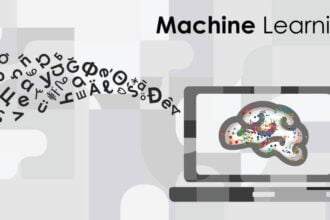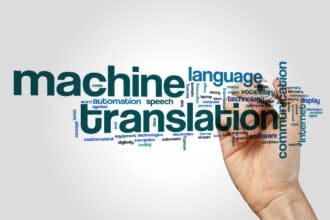Machine translation has come a long way since it was first developed in the 1950s. It’s said that the machine translation market will have a compound annual growth rate of 7.1% from 2022 to 2027. Neural machine translation is the latest development in this sector.
Today, we will discuss Neural Machine Translation (NMT) and how it’s a key player in software localization. If you’re interested in how NMT and post-editing translation can speed up the localization process in software while ensuring its quality, then keep on reading!
What is Neural Machine Translation (NMT)?
But before we continue our discussion, let’s define Neural Machine Translation (NMT). Unlike previous iterations of machine translation, NMT runs under a neural network that uses artificial intelligence when translating text. The neural networks mimic a human brain in the way. The neurons do machine learning and interpret several languages quickly as each network is used for different processes. It makes the translation process very efficient.
Past machine translations ran under rule-based or statistical-based programming, so when it predicted the sequences of a translated sentence, the output would be more rigid and contain more inaccuracies. NMT systems don’t experience the same issues as they can be trained to process large quantities of data from previous translations conducted by human translators. This is one of the reasons that marketers use big data to aid in translating content.
Due to how advanced NMTs are, many fear that they will replace human translators. However, like with any technology, they’re not perfect. It’s been reported that NMTs “hallucinate” because even if the translated text sounds natural, it can make errors in the information it supplements.
For example, in the translated text it contains wrong dates or inaccurate information due to how the NMT processed the data from the internet or from previous encounters on the subject matter. This is why scientists call this phenomenon “hallucinating.” It’s also why many experts in the translation industry recommend incorporating post editing translation when you use NMT to translate or localize content.
Why Software Localization is Important for Any Software Company Seeking to Enter a New Market
Despite what many people think, the internet’s language isn’t English. Over the years, with more markets becoming more available on the internet, it has become more multilingual due to our globalized and digitalized economy.
Because of this, it’s not surprising that many companies across various industries have begun to make their businesses more available in several languages. We’ve listed some data and information that support these claims:
- Around 360 million out of 7.2 billion are native English speakers, making up only 5% of the world’s population. (Twistedsifter)
- 76% of online buyers said that they prefer reading information about products in their native language. (CSA Research)
- Japanese users reported to be less likely to engage with content that’s not in Japanese, and about 1 out of 7 said they use online translation tools weekly as they browse the internet. (Data Reportal)
- About 6 out of 10 Columbian users said they used translation tools weekly, as Latin Americans were reported to likely use online translation tools while browsing the internet. (Data Reportal)
- The Chinese content found online only makes up 2.8% of the internet even though there are about 988.99 million Chinese users. (The Translation People)
- If you were to translate or localize your software to these 4 countries: the US, Germany, China, and Japan will give your business access to 50% of the global economy’s sales, increasing 80% of the global purchasing power. (Translated)
- Despite having a population with high English proficiency, 80% of Sweden’s online shoppers still prefer buying in Swedish rather than English. (Oneskyapp)
For this reason, many software companies are investing in localizing their software and business due to the opportunities it presents.
What is Software Localization? It’s adapting an app or software’s user interface for a target market. It’s not just translating the content but making it feel natural like a native speaker created it. It’s achieved through creating content based on your target users’ cultural and linguistic preferences.
In the past, software localization took a significant amount of time to ensure its quality. Even though companies started using machine translation, solely relying on it wasn’t an option as its output contained several inaccuracies and mistranslations.
But with the rise of NMT, many are seeking to use this new technology in the software industry to quickly localize software and ensure its quality due to its artificial intelligence program. The development of these advancements led to a rise in educating and training translators in machine translation post-editing, which we will discuss later in the article.
How Translators are Using NMTs to Accelerate Software Localization
Because of its advanced neural network systems, many software companies use Neural Machine Translation because they can be tailored for specialized industries and market research sentiment analysis. There are free neural translation engines that you can use, like Google Translate, Microsoft Translator, and DeepL Pro. After having it translated by an NMT, you will need post-editors to check and edit for any inconsistencies and errors in the translated text.
This process is called Machine Translation Post-Editing (MTPE). It’s when content is first translated by a machine translation engine and then edited by a human translator or linguist. Some have considered it a “cyborg solution” to the increasing demand in the translation industry, as MTPE blends both human skill and machine efficiency to give the quickest and most cost-effective to achieve high-quality translations.
When you use Neural machine translators, the two forms of MTPE that businesses commonly use:
- Light post-editing – It means the editor does proofreading and fixes grammatical errors. The documents are edited at a minimal level. They are usually for internal purposes or will be used for a short period, which is why it’s needed immediately.
- Full post-editing – Editors conduct a more thorough approach to proofreading and editing to ensure that the translated text is accurate. The text appears more natural and has a more cohesive tone. It also considers the cultural and linguistic aspects of the text, which often get lost when processed by machine translation.
For software localization, we advise that you do full-post editing since the localized content has to appear as natural as possible. When you localize your software, there are about four things to look out for when using NMT for MTPE:
- Choose a suitable NMT engine to use.
- Train your NMT Engine so it can handle the kind of content you will be translating or localizing.
- Employ a native translator for post-editing machine translation.
- Pre-edit the source text and simplify it because NMT works better when the text isn’t convoluted and complex.
7 Tips that You Should Know about Software Localization
In our research, we have listed seven things you have to consider when localizing software.
1. Internationalization coding is vital
Internalization is when you strip away several elements that are tied to software, like the location or language. It involves adapting the software to your target market by considering the i18n code by reviewing your application framework to see if it can be supported by localization software.
2. Use Dynamic UI Expansion
Depending on the language you’re targeting, you might have to change it from having the format of UI have the text readable from right to left or top to bottom. Using dynamic UI expansion ensures that the text fits your iOS no matter what language.
3. Prepare String Extraction and Resource File Program
You will need to do string extraction and localize them before reinserting them into the code. Unicode helps encode a script for a language. After you have extracted the strings, you can have it processed through an NMT engine and have a native translator localize and post-edit it. Just be sure that when you do string extraction, it is within a resource file that’s compatible with the localization management software you’re using.
4. Try Out Localization Management Tools
If you have decided to localize your software on your own, we suggest that you look for localization management tools and platforms out there that you can use so that it will be easier to manage and you can better implement your agile software development strategy.
Here’s a list of well-known localization management platforms that you can use:
- Lokalise
- Smartling
- Crowdin
- Locize
- Smartcat
- Wordbee
- POEditor
5. Conduct Localization Testing
Just like using tools and hiring professionals to conduct quality assurance for your software, you will also need to do localization testing.
It means you will need to do the following things to ensure the quality of your localized software:
- Do verification testing and tryout the basics of your software.
- Plan out your testing and how you will process your analysis based on what you have gathered.
- We suggest you do the initial testing phase, evaluate specific use cases from your software, and do regression testing to identify if it has any bugs.
- After you’ve done all that, you will need to create a report to document and provide references for future projects.
6. Have Local User Testers
Your target users are the best judge of whether you have successfully localized your software. Because of this, before you launch your software, you have it tested by local users. The sample size as your target locale will provide insight into the UI and UX of your software, like areas that worked and parts that need more improvement.
The feedback you get will provide a better perspective of your target users and how your business or software can better aid them.
7. Hire Professionals in Software Localization on NMT
If you can’t work on the localization of your software, you can always hire professionals in software localization and NMT. Outsourcing the task of software localization might seem risky, but it’s one of the most efficient ways to ensure its quality. You might not have the time or resources to do everything on your own so delegating the task to an agency specializing in software localization through MTPE is your best bet.
When selecting an agency or team that you will outsource software localization:
- Check their credentials. Like how many years have they been doing software localization? Are they ISO certified to provide MTPE services?
- Plan Ahead. Create a strategy and invest time and money in localizing your software projects.
- Assign Outsourcing Roll. Have someone from your company be assigned to work with your outsourcing partners and work things with them to ensure there’s no miscommunication between you and your partners.
- Have a Management Procedure. This means creating an efficient way to collect and send feedback to ensure that projects don’t get delayed and the software is properly localized.
Final Thoughts
For any software company seeking to expand internationally, they must make their software available in more than one language. Translating and localizing content has become quicker than ever before with NMT. However, like with any technology, it’s not perfect.
By implementing the MTPE process in software localization, you get the best out of NMT solutions and the expertise of native translators. Hopefully, the tips and advice provided in this article will be helpful when you get started in localizing your software.











